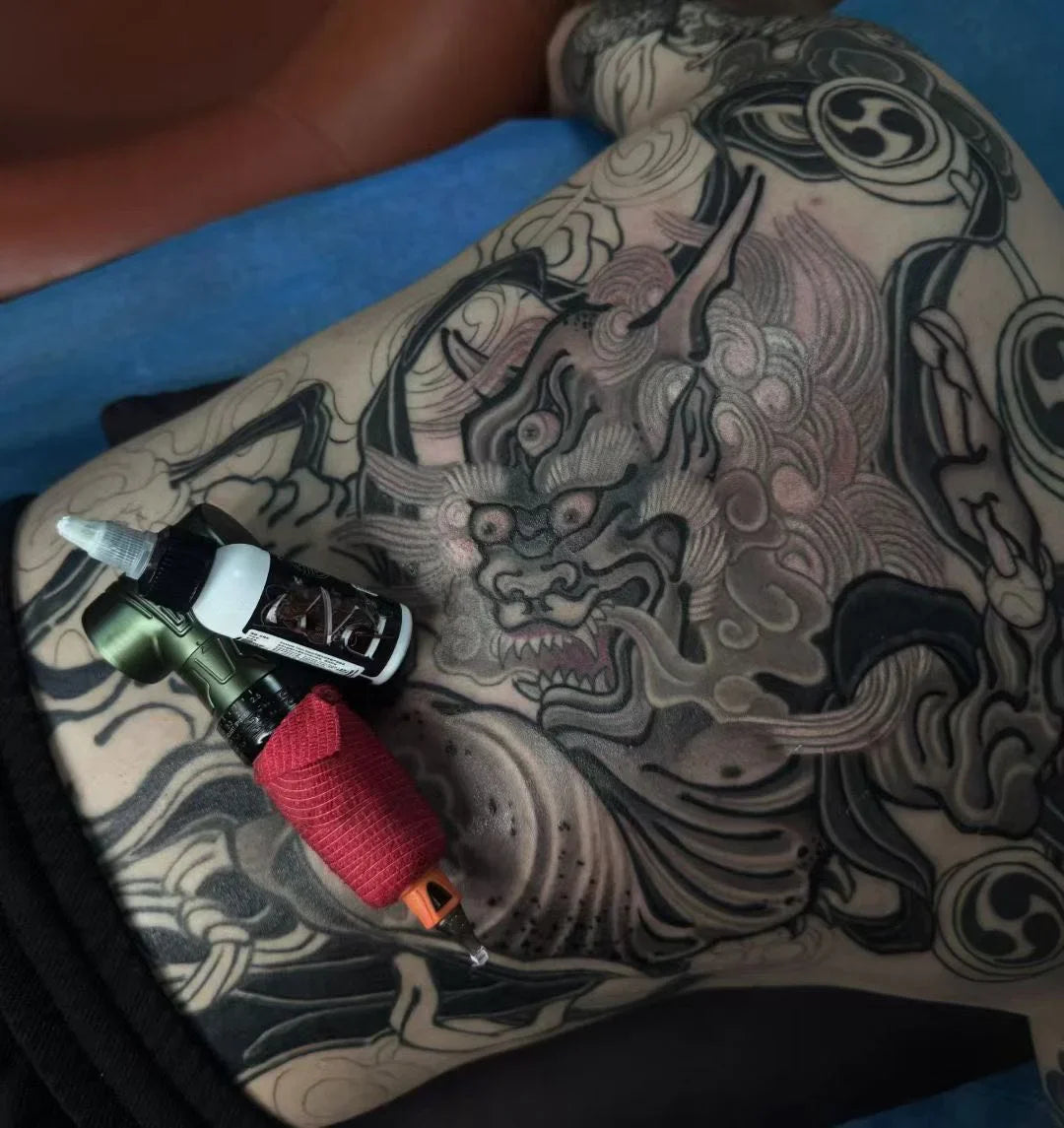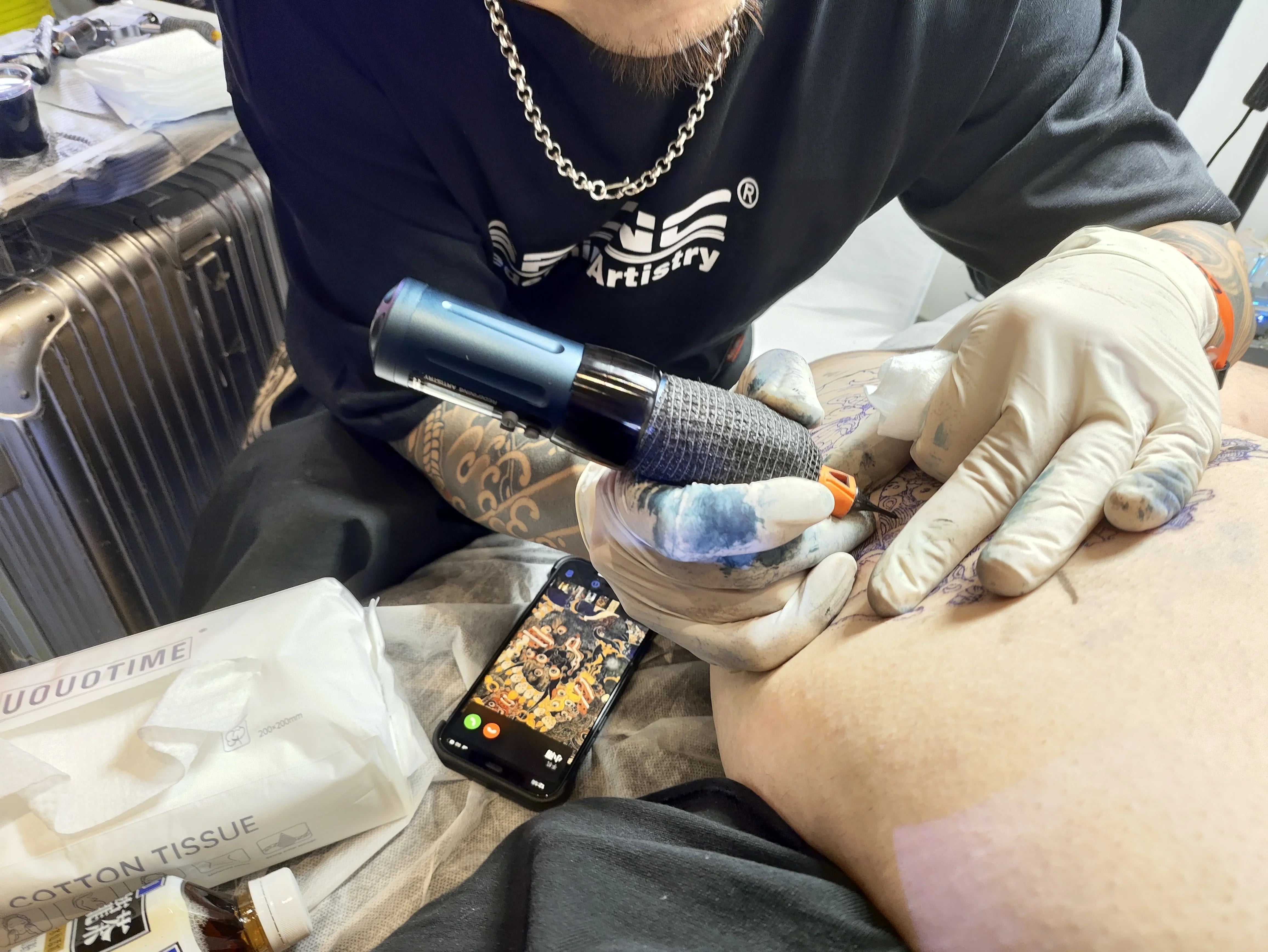Article: Understanding Tattoo Styles: Techniques for Traditional, Japanese, Minimalist, Realistic, and Black & Grey.

Understanding Tattoo Styles: Techniques for Traditional, Japanese, Minimalist, Realistic, and Black & Grey.

Tattoos go beyond simple body art. They serve as strong ways to show who you are. Picking the correct style and knowing the right tools matter a lot. This helps you get beautiful results that last and keep you happy for years.
Key Factors to Consider When Choosing a Tattoo Style
Personal meaning sits at the heart of every choice. People often pick images that mirror their values, heritage, or big life moments. Cultural roots play a huge role too. Japanese tattoos, for instance, carry rich symbols drawn from ancient myths and customs.
Besides that, your skin tone changes everything. So does placement on the body and the size of the piece. Bold traditional tattoos pop on some complexions. Minimalist ones shine in tiny spots—like the wrist or behind the ear.
What's more, match the style to your artist's strengths. Specialists in realism or Japanese work deliver sharper, truer outcomes. They know the tricks inside out.
Tools and Equipment That Influence Tattoo Outcomes
Great gear makes or breaks a tattoo. A top-notch wireless tattoo pen gives exact voltage control and a comfy grip. Long battery life keeps sessions smooth. These features let artists work without breaks and feel every move.
Needles count just as much. Modern cartridge needles cut down noise and shaking. The process stays quiet. Ink flows better, and the needles hold more.
For styles that need steady hands, a light rotary pen works wonders. Precision feels natural.
Traditional Tattoo Style: Bold Lines and Iconic Imagery
Traditional tattoos—also called “old school”—never fade from favor. They stay classic forever.
Defining Characteristics of Traditional Tattoos
Thick black outlines rule here. Colors stay simple: red, green, yellow, black. Classic motifs appear everywhere—anchors, roses, daggers, swallows. Boldness wins over tiny details. Designs stay clear decades later.
Techniques Commonly Used in Traditional Tattooing
Artists grab round shaders or magnum needles to pack bright color fast. Clean lines come from premium round liner needles. Consistency stays perfect.
Japanese Tattoo Style: Cultural Symbolism and Flowing Designs
Japanese tattoos mix stunning art with deep stories. The tradition stretches back centuries.
Visual Elements of Japanese Tattoos
Mythical beasts show up often—dragons, koi fish. Nature joins in: waves, cherry blossoms, clouds. The ink flows across backs or full sleeves. Negative space creates balance. Motion feels alive.
Tools and Techniques in Japanese Tattooing
Smooth shading stands out most. Rotary machines help a ton. Magnum or soft-edge magnum shader needles build gentle gradients. High-quality cartridge needles keep ink flowing softly and limit skin damage.
Minimalist Tattoo Style: Simplicity in Expression
Minimalist tattoos keep things clean and quiet. Less proves more.
Aesthetic Features of Minimalist Tattoos
Thin lines dominate. Geometric shapes appear. Small scripts whisper messages. People love them on inner wrists or collarbones. Shading? Almost none. Color? Rare.
Technique Considerations for Minimalist Work
Blowouts ruin fine work. Ultra-fine round liner needles stop that. A lightweight rotary pen offers total control. Delicate lines stay sharp.
Realistic Tattoo Style: Photographic Detail in Ink
Realism demands patience and skill. The goal? Lifelike images on skin.
Elements That Define Realistic Tattoos
Portraits look real. Animals breathe. Still-life scenes fool the eye. Black & grey or full color—both work, depending on the subject.
Technical Demands of Realism Tattooing
Layered shading builds depth. Transitions stay silky. Quality cartridge needles give better ink control and absorb shocks. Adjustable voltage on the machine lets artists dial in settings during long hours.
Black & Grey Tattoo Style: Depth Through Monochrome Shading
Black & grey tattoos create drama with just one color family. Shades do all the talking.
Visual Traits of Black & Grey Work
Portraits glow softly. Religious scenes inspire. Lettering stands strong. Some pieces feel airy; others hit hard. Diluted black ink makes every tone.
Techniques for Achieving Smooth Grey Washes
Artists mix greywash carefully. Rotary machines run steady and gentle on skin. Many masters still swear by coil machines. Either way, premium cartridge needles deliver ink evenly from start to finish.
Choosing the Right Equipment Based on Your Preferred Style
Match your machine to the job. The difference shows fast.
· For Bold Linework (Traditional): Grab a strong, steady machine—coil or rotary. It pushes big needle groups without flinching. Outlines stay crisp.
· For Detail-Oriented Styles (Minimalist/Realism): Light weight matters. Low vibration helps. Fine lines and portraits demand exact control.
· For Consistent Shading (Black & Grey/Japanese): Smooth stroke wins. Hard or soft hit? That depends on your hand. Both can shine.
Final Thoughts on Selecting a Tattoo Style and Tools

Style choice runs deeper than looks alone. Tools shape what you can create. Love thick traditional lines or quiet minimalist marks? Professional-grade gear from BIGWASP built for that style lifts your work higher. Tattoos last a lifetime. Make them count. Contact us today for more information!
FAQs:
Q1: What should a beginner look for in a tattoo machine?
A1: Start simple. Go lightweight to fight hand fatigue. Low vibration keeps lines steady. Easy adjustments for depth and speed help new artists learn fast. Most beginners love a reliable rotary pen—it lines and shades without fuss.
Q2: What are the pros and cons of cartridge needles vs. traditional needles?
A2: Cartridge needles win on speed and cleanliness. The membrane stops backflow. Swap types in seconds. Traditional needles take longer to set up, yet seasoned artists customize them perfectly and save money long-term.
Q3: How do I know which tattoo style suits my personality?
A3: Think about what you love visually. Factor in culture, pain threshold, and job rules. Scroll through thousands of photos. Talk to a skilled artist. They’ll look at your skin, placement ideas, and story—then guide you toward a style you’ll never regret.


Leave a comment
This site is protected by hCaptcha and the hCaptcha Privacy Policy and Terms of Service apply.